Translations 677
Charlise Theron Might Leave the US

Charlise Theron Might Leave the US, Fearing its Racism
April 16, 2018
Translated and edited by Walter Lippmann for CubaNews.
 Actress Charlize Theron said she is considering leaving the United States for the sake of her two adopted children because she is concerned about racism in the country, where “she is much more alive than people thought.”
Actress Charlize Theron said she is considering leaving the United States for the sake of her two adopted children because she is concerned about racism in the country, where “she is much more alive than people thought.”
Separated from actor Sean Penn since 2015, the actress is the single mother of two children, a boy, Jackson (6), and a girl, August (2), adopted in South Africa.
Concerned about the issue of racism in the United States, she said that “it exists and is much more latent than people thought.”
“We can no longer deny it. We have to raise our voices. There are places in this country where if I were offered a job there, I wouldn’t take it,” he continued. “I wouldn’t take my kids to certain parts of America and that’s pretty problematic.”
Interviewed by Elle magazine, she said she has only her mother, Gerda, to help her raise her children. “I’m so lucky to have her, without her I’d feel so alone in all this,” she said.
“Many times I look at my children and tell them: if this continues, I will have to (leave the United States). Because the last thing I want is for my children to feel insecure,” added the 42-year-old star, born and raised in South Africa during the apartheid era in that country.
“They’ll have to know that it’s a different climate for them than it is for me, and how unfair it is,” the Oscar winner said of her children.
Theron is promoting her new comedy, “Tully”, which will be released on May 4.
On the other hand, in the cover interview for Elle magazine, Theron spoke about the difficult adoption process she faced.
“I never saw the difference between raising an adopted child and a biological child. I don’t feel like I’m missing anything,” he said. “It was always my first choice, even when I was in a relationship.”
The actress recalled that she suffered “a lot during the process”. “Among the hardest times in my life was when I filed the adoption papers; it really destroyed me emotionally,” she said. “There were so many situations that didn’t work and you get attached and you get excited and then you get devastated.
Theron remembered that she had always dreamed of adopting a child. “I’ve always been aware that there are many children in the world who don’t have families,” she said.
(With information from Ansa)
Havana’s 500th Anniversary

Looking Toward Havana’s 500th Anniversary
 By Graziella Pogolotti
By Graziella Pogolotti
digital@juventudrebelde.cu
A CubaNews translation.
Edited by Walter Lippmann.
The information panorama is beginning to show signs of preparations for the forthcoming commemoration of the fifth centenary of the founding of Havana. Many of us were eagerly awaiting this promising announcement, because the passing of time has left scars in a city endowed with unique values and the deterioration of the environment is inevitably reflected in the behaviour of the citizens who live there.
In this context, I think it is right to begin the urgent rescue operation with the restoration of order and cleanliness and to offer concrete answers to the most pressing demands of daily life in the neighborhood. Thus, from the grassroots level, it is possible to appeal to the committed and participatory action of the inhabitants.
The rediscovery of the urban values that have characterozed, through an incessant secular accumulation, the profile that makes the capital unique, cannot be postponed and is no less important. Eusebio Leal’s stubborn preaching has helped to place the heritage legacy forged in colonial times in the place it deserves.
In the remote days of its foundation, Havana was a disorderly agglomeration of adobe and wooden shacks, located next to the port, subject to devastating fires and the threat of the freebooters. With the passage of the fleets and the construction of the defensive system, streets were laid out and houses became larger. The image of the city was configured with its palaces in dialogue with the squares. Moderately baroque, the façade of the cathedral has a space of perfect proportions, open and intimate, like a theatre. After all, the need to preserve urban planning imposed the requirement to delineate regulations through municipal ordinances. Oriented in various directions, the roads, still in use, connected the centre of the city with the surrounding territories.
The expanding city grew westward in successive stages. In search of a more favorable climate, the wealthy built mansions next to the Calzada del Cerro. They would then go to Vedado, Miramar, Cubanacán. In the uninterrupted movement in space and time, stylistic and epochal marks crystallized. They form a treatise on architecture and urbanism, a vocation for modernity tempered by the local context.
The first Industrial Revolution unleashed, in the nineteenth century, the excessive growth of cities. Faced with the danger of a polluting proletarianization, Baron Haussmann made Paris the spectacular scene that we know today. The initial notions of urban design were being established, which has now become a complex transdisciplinary knowledge, aimed at restoring the human dimension to the habitat with the participation of technical knowledge for the management of construction, hydraulic infrastructure networks and waste disposal, adequate road traffic and the social sciences, particularly sociology.
With a modernizing will, Vedado was born presided over by a clear notion of integral urban design. The layout of the main avenues favored rapid communication with the city. Mandatory regulations determined the height limits of the buildings and the lawn area that separated the houses from the sidewalks, conducive to a lifestyle and gave a unique visual characteristic of the area.
In the middle of the last century, financial speculation over land value threatened to subvert the harmonious coherence of the whole. The Revolution was able to preserve its original character for many years, contrary to what happened in other countries where a predatory gigantism destroyed significant historical legacies.
The effects of the economic difficulties, from the special period onwards, partly lacerated the assets we had managed to preserve. Aside from legislation, improvised interventions appeared everywhere. However, in essence, the original imprint of the area remains. We are still in a position to safeguard it if we become aware of its value, because the very rich built heritage of Havana extends beyond the colonial zone. This is how the writers perceived it in some of the best pages of our literature, and it also manifests itself in the latent and underground memory of our popular music.
The approaching half-millennium poses an immense challenge. To assume it wisely and turn it into a collective will is a way of growing. It can’t all be done at once. It will have to be tempered as much as possible, according to the available resources. However, the most important thing, however, is to take into account the imminent while considering the perspective of the future based on the key factors that are unique to the region.
Between Trump and the Deep State
Between Trump and the Deep State
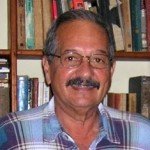
By Manuel E. Yepe
http://manuelyepe.wordpress.com/
Exclusive for the daily POR ESTO! of Merida, Mexico.
Translated and edited by Walter Lippmann.
In the political lexicon of the United States, since the presidency of Donald Trump, the mysterious concept of a “Deep State” has become fashionable. It’s understood as a kind of mystical adversary that the president’s cabinet must face.
The term has been used to refer to an allegedly secretly operating network of public officials working to prevent Trump from pursuing his policies. The expression is also used to allude to a de facto power of public employees whose stay in office is beyond the control of the president.
But its definition varies according to who uses it. It generally implies the existence of a secret and invisible nebula that operates from the bowels of government and that would be responsible for leaks of sensitive information from public offices, including those of intelligence and those of advisers and analysts directly subordinate to the President.
“The deep state has to stop with its shit,” Roger Stone, Trump’s old political adviser, told The New Yorker magazine on the eve of the president’s inauguration January 20.
He was referring to information published by The New York Times, citing U.S. officials, indicating that the FBI, CIA and other intelligence agencies were investigating Stone and other Trump collaborators for alleged links to Russia.
Stone denied having had such links, and blamed the “deep state” for the information disclosed.
Different media supporting the government have handled the concept, especially after it was revealed that the Micheal Flynn, Trump’s then- National Security Adviser, had withheld information about his contacts with Russia, which, according to the press, led to his having to resign shortly after taking office.
“The deep state never sleeps. It’s always doing something to undermine Trump’s administration,” said an article on Breitbart News, a right-wing Web site whose founder and former executive, Stephen Bannon, a controversial Trump trustee who was repeatedly accused of anti-Semitism and racism and who served as the White House’s chief strategist.
“The Deep State is here,” Ed Rogers, a Republican columnist in his Washington Post column, wrote a week earlier. “It is a worrying phenomenon to have the anti-Trump organizations and Democratic officials aligned conspiring to work actively against the government in office,” he said.
However, there is no shortage of analysts who reject the idea that in the US there can be a “deep state” acting in the shadows. “The term comes from a kind of conspiracy theory that does not capture what is a normal tension between bureaucrats who have been running political programs for years and who may want to change things themselves,” says Gordon Adams on BBC World.
According to many analysts, the “Deep State” actions that overwhelm Trump derive from the basic contradiction between the federal government and the invisible power of the military and corporations defined by former President Dwight Eisenhower as the Military-Industrial Complex. This tension is manifested, for the time being, as a confrontation between the White House and the intelligence community, in which the latter acts, by definition, in a reserved manner.
When he was Trump’s chief strategist, Steve Bannon defined the government’s goal as the deconstruction of the administrative state, which he believed had been set up by the political left to defend its interests through bureaucratic regulations that must now be corrected.
“If you look at the cabinet appointments, you’ll see that they were made with a goal of deconstructing the administrative state,” Bannon said in a meeting with conservative politicians.
Proof of this is that many people chosen for Trump’s Cabinet have had conflicting positions with those traditionally assigned to the departments for which they were appointed.
For example, for the Environmental Protection Pgency, he chose someone with interests linked to the fossil fuel industry who doubts the existence of climate change. As Education Secretary, he selected a millionaire who is an enemy of public education and public schools. For the Health Department, he chose a doctor who believes that the problem is that “there is too much government involvement in health care.
There are those who appreciate that this conflict of interest between senior government officials and civil service officials supports the existence of a “deep state” operating against Trump as an unpredictable, ignorant person, one incapable of fulfilling the mandate of the dominant forces of the system… much less the mandate of the citizenry.
May 25, 2018.
Refuge of Faith and Popular Accompaniment

Refuge of Faith and Popular Accompaniment
Ten married couples who were also pastors of the Church of the Nazarene died in the tragic plane crash last Friday. JR reports on expressions of solidarity and tributes by the peole of Holguin towards their brothers and sisters during these days
Posted: Tuesday 22nd May 2018 | 09:53:08 PM
A CubaNews translation.
Edited by Walter Lippmann.
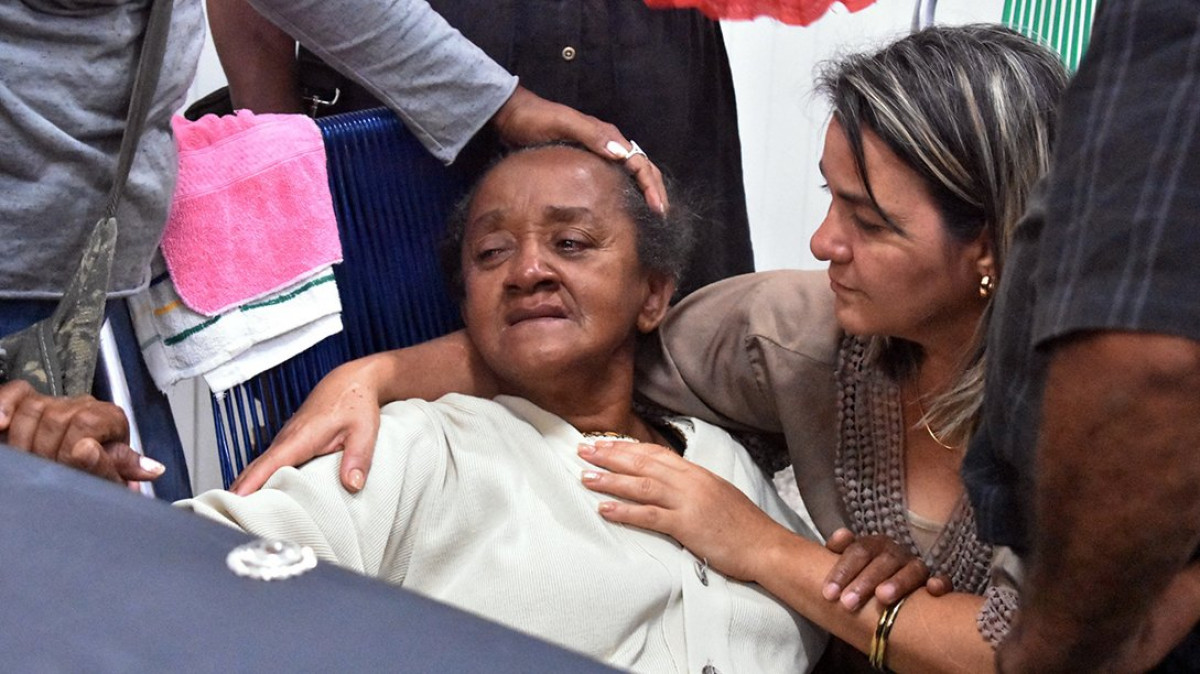
The mother of one of the victims has received comfort from her neighbors, close relatives and siblings of faith Author: Ernesto Herrera Pelegrino Published: 22/05/2018 | 07:10 pm
HOLGUIN: When fatality hovers over a community and takes human lives, the borders between any position, both religious and existential, fade in the face of solidarity and humanism. Everything revolves around the comfort of the mourners, the material and sentimental support they need.
These signs of brotherhood between the human beings were on prominent display during Monday night and Tuesday morning, when the people, in a massive way, joined in the sorrow of the relatives of the two couples of shepherds whose mortal remains returned to their native land, so that their bodies could rest close to their loved ones.
As a posthumous tribute to the work and memory of the marriages of Norma Suárez Niles and Jesús Manuel García Oberto, and Gelover Martín Pérez Avalo and Yoneisi Cordovez Rodríguez, the parishioners of the Church of the Nazarene in this province went to the Los Álamos funeral home and the main hall of the Provincial Art Center, respectively, to accompany their families in sorrow and unite in their faith.
Both places were also visited by co-workers, neighbors, friends and the highest authorities of the Party and the territorial government, as a sign of solidarity over their loss.
Alina Rodriguez Ochoa, an English professor at the University of Medical Sciences and a member of the Church of the Nazarene, was found interpreting for Canadian faith brothers who were on vacation in Havana and who, after learning of the tragedy,decided to travel to Holguin.
She assures us that at this moment her place is at the side of the mourners and she recognizes the dedication of each person in accompanying those who suffer today in their grief.
“Amidst the sadness at the loss of our brothers and friends, we tried to support everything because the district director has been left without his board of directors. My family is supporting the home so that I can be here today. My son is only 15 years old and wanted to stay with the three children of my deceased pastors, my husband is in charge of the home doing the necessary chores and my mother, although she is very old, also helps,” said Alina.
Ruth Collins, from Nova Scotia, Canada, expressed her deepest sorrow at the physical loss of the pastors.
“Our brothers in Canada are praying all the time,” said the member of the Oxford Church of the Nazarene.
The leaders of the congregation also expressed their shock. Luis Ramon Batista Ramirez, superintendent of the work of the Church of the Nazarene in the Cuba-East district (from Ciego de Avila to Maisi), said:
“We are very emotionally affected, not only by our companions and brothers and sisters of faith, but by all those who lost their lives in the accident. This is very painful for the Cuban and international community. I thank God for the collaboration that has come from churches, neighbors, friends…. all always supporting.
As a result of the death of the married couple, ten children under the age of 16 were orphaned. The Superintendent expressed the responsibility that the Church assumes with these children in its decision to “never abandon them, to keep them in our lap, we will always help them. Although we will not be able to replace their parents, we will do everything we can to help them in their education, so that they may continue to know God and do everything possible for them until they become men and women.
Meanwhile, Héctor Rafael Ortiz Hidalgo, a priest of the Church and member of the Ministerial Studies Board, remembered his deceased brothers as “unblemished people, of faith, with conviction; people in whom both the church and the neighbors had enormous confidence.
The priest also acknowledged the help of the Government of the province, “which has been unconditional” and stressed: “The Church-Government relationship has been tremendous: they have provided us with cars, supplies, all the facilities to do the work that we have carried out during these four days, with doctors and psychologists. The Church of the Nazarene is very grateful to you.
In this hour of grief, it is very difficult for family members to agree to give statements to the press. Nevertheless, Milagro Suárez Niles, sister of Norma Suárez Niles, overcame the feeling that overwhelms her to thank all those who, in different ways, in numerous spaces and at different levels, have shown themselves sensitive to her loss:
“We have felt the solidarity from the Council of State, in the figure of President Miguel Díaz-Canel; from the Church at the national level, from the comrades in the Government… Everyone has been very attentive. Unfortunately we don’t have the being we want next door. Therefore, I recognize the company of the brethren of religion, because they have prayed that we may have calm. Everybody sees me and hugs me, kisses me. I am left with the satisfaction that my sister was happy the days before the accident, sharing and celebrating with her colleagues. That gives me strength in the midst of the pain that will never happen,” said Milagro.
According to Ernesto Herrera Pelegrino, who has been very close to the congregation during these days for professional reasons, there have been many expressions of support for the relatives and homage to the victims in many communities in the territory.
“The shepherds who worked in the Estrada neighbourhood (Urbano Noris) were among the dead. There the people spontaneously made a book of condolences, brought flowers to the church and formed a kind of reminder. Many people joined the parishioners in their grief to remember those pastors who made an impact with their example and dedication. In the community of La Calera, near Velasco, a funeral service was held for one of the shepherds who died. In the midst of the pain, these expressions have been very beautiful as a gesture of solidarity,” said the young journalist.
These are signs of sensitivity and humanism of a people who, diverse in their religious positions and thoughts, unite in the face of pain, “in a tight context”, as the Teacher [Jose Marti] taught us.
Closed

Closed
Posted: Saturday 19th May 2018 | 09:21:59 PM
 By Graziella Pogolotti
By Graziella Pogolotti
digital@juventudrebelde.cu
A CubaNews translation.
Edited by Walter Lippmann.
Here and there, in private commercial establishments, the use of English advertisements is spreading, as if by blast wave. This presence begins to invade public space. In these circumstances, it is essential to remember that Spanish is the official language in our country. Identity bearer, an essential component of our culture, it integrates the constitutive factors of the sovereign nation. Moreover, the law imposes a requirement that all citizens must use it it.
One might suppose that there is a temptation among new traders to please visitors from other countries who are increasingly coming to us, even though not all of them are native English speakers.
This is an erroneous assessment. The motivations of travelers are manifold. Many enjoy the attractions of nature, the sun and the beach. Others prefer to frequent the cities, interested in the heritage values that make them unique and in the behaviour of a communicative, streetwise, welcoming and friendly people, as those who have spent time with us since colonial times have recognised. In the built environment and in the people who inhabit it, they discover the values of a different culture, built up through a specific history.
Unconsciously, the environment around us influences the use of language. I was a young graduate looking for a job when I was offered the opportunity to collaborate on the development of a spelling manual. The author of the text had previously conducted a survey among students to detect the most frequent errors. There were not when writing the word beer, despite the c, v and z, so committed in our Latin American speech. At that time, the competition between the most recognized brands was manifested in an advertising display in the streets and on television. The spelling was indelibly engraved on everyone’s retina.
According to the press, the President of the Councils of State and Ministers, Miguel Díaz-Canel, stressed in words spoken by the Ministry of Education, the need to attach the importance it deserves to the development of reading habits through the conduct of a teacher, who must always carry a book before the schoolchildren who must follow his example.
The issue becomes more important in times of increasing dominance of audiovisual communication. It has been the subject of international analysis and research. Among us, the issue demands first-rate attention in view of the deterioration in the use of the language, which is of concern to a wide range of social sectors. In various ways, there has been a need to give due weight to language learning, not only through the use of grammar, but also through training in the comprehension of literary texts.
The mastery of the language associated with human communication and the ability to forge in the students the exercise of independent, critical and creative thinking, open to access to knowledge and to the permanent search for innovation, is a fundamental demand of this era. It constitutes an inseparable part, together with history and mathematics, of the triad of disciplines which, beyond the instrumental, are distinguished by their formative character.
Preserving the potential richness and expressiveness of the word and designing strategies based on the present and, above all, with a view to the future of the creatures that are being born, when the dominant telegraphic messages in the use of mobile phones supplant the art of conversation, block productive dialogue, interfere with the transmission of knowledge, castrate the creative impulse of imagination and limit the sensitive approach between humans, are urgent demands.
The complexity of the challenge involves the family and the school, but transcends compartmentalized institutional boundaries. Since dawn, communication has presided over the entirety of our existence, just as much as the oxygen we breathe. It manifests itself in the most intimate part of the home, in the streets, in the provision of services, in the formulas of civilized coexistence, in the fabric of the information networks that connect us with the reality of the country and with the paths of international events. Understanding the magnitude of the problem is an essential step in the search for solutions.
Culture and identity embrace the territory of spirituality, the residence of the values that define us as a people. They last and are transmitted through the language we have inherited. Let us take care of it in the messages that animate our streets, in the media, at school and in the workplace. We can do it right now. In the meantime, to be precise
Horse-Back Riding as Medical Treatment
By Elizabeth Reyes Tasé A CubaNews translation. Date: May 24, 2018 9:33 AM ACN 13 PLENITUDE, ACN Section A brief tour through the history of medicine places equine therapy among the countless therapeutic procedures that men and women of science have employed in their incessant efforts to improve the health and quality of life of people with physical and mental disabilities. The Greek sage Hippocrates recommended horseback riding to regenerate, preserve the body and treat ailments such as insomnia and muscular diseases. Likewise, the ancient and renowned traditional Chinese medicine values this practice as very beneficial to combat various evils. Transmitting warmth and stimulating various parts of the human body, strengthening self-confidence and providing greater emotional security are among the many reasons for using equine therapy worldwide. It is recognized as a therapeutic alternative that uses the benefits of multidimensional horse movements to treat neuromotor and psycho-affective disorders, and aims to rehabilitate and insert people with different disabilities into social life. Alternative or complementary treatment, hippotherapy, social riding, zootherapy and pseudo-therapy are some of the names used interchangeably by followers and detractors of this practice, which the World Health Organization defines as a sports activity that is favourable to combating physical, mental and social pathologies. Under Resolution No. 58.04 of the National Company for the Protection of Flora and Fauna (Empresa Nacional para la Protección de la Flora y la Fauna), it was proposed, among other objectives, to expand the therapy to the entire island, providing areas for this purpose in the provincial capitals, as well as to promote scientific research in this regard and integrate it into rehabilitation programs. With these premises, this type of therapy has been used on the island to treat children and adults with different pathologies, including autism, mental retardation, cerebral palsy, Down syndrome and multiple sclerosis. Experiences in territories such as Santiago de Cuba, Camagüey and Havana bear witness to its positive effects on disabled patients, and especially on children with special educational needs. On the subject, the Cuban News Agency spoke with educator Yoandra Pérez Mendoza, director of the special school Graciela Bustillos, one of the two educational institutions of the city of Bayamo, which benefit from the application of equine therapy in the province of Granma. The experience at the center, he said, has generally materialized with infants suffering from hemiplegia, cerebral palsy or other physical pathology, although small carriers of Downs syndrome have also been stimulated; in all cases with success. Although they are only visible in the long term, changes have been seen in our students, for example, in the autistic, who respond very well to socialization actions with horses, he said. He said that students with cerebral palsy were also favored. We have cases that initially did not walk, and today they can do so, although with difficulties. Of course, the equine therapy sessions are complementary, since several specialists from the school participate in them, along with the person responsible for the project for the Flora and Fauna Company, thus making it easier for the students to receive constant stimulation from various sources, which is healthy and also improves communication, he said. José Alberto Cuesta, physiotherapist at the aforementioned educational institution, pointed out that interaction with the horse in a natural environment, outdoors, is very beneficial for the children. From his experience, mostly with children suffering from cerebral palsy, this young man declares that this therapy strengthens muscles and benefits motor skills, because the equine provides them with the balance they do not have. Very good moments for the integral stimulation of the students are propitiated, because a multidisciplinary team is working, in addition, psychopedagogist, speech therapist, music and plastic arts instructor, he added. Stories like these have many points in common with others that we can hear in different parts of the world, which is why equine therapy is established every day as a very useful alternative to improve the quality of life of people with disabilities, and riding continues to gain fame among sports activities that favor the cognitive, physical, emotional and social development of human beings. (By Elizabeth Reyes Tasé, ACN) Date: May 24, 2018 9:33 AM ACN 13
PLENITUD, sección de la ACN Un breve recorrido por la historia de la medicina ubica a la equinoterapia entre los innumerables procedimientos terapéuticos que hombres y mujeres de ciencias han empleado en sus incesantes esfuerzos por mejorar la salud y calidad de vida de personas con discapacidades físicas y mentales. El sabio griego Hipócrates recomendaba montar a caballo para regenerarse, preservar el cuerpo y tratar dolencias como el insomnio y las enfermedades musculares. Igualmente, la milenaria y reconocida medicina tradicional china valora esa práctica como muy beneficiosa para combatir diversos males. Transmitir calor y estimular diversas partes del cuerpo humano, fortalecer la auto-confianza y proporcionar mayor seguridad emocional, figuran entre las muchas razones que explican la utilización de la equinoterapia en todo el mundo. Se reconoce como una alternativa terapéutica que utiliza los beneficios de los movimientos multidimensionales del caballo para tratar afecciones neuromotoras y psicoafectivas, y tiene como objetivo rehabilitar e insertar en la vida social a personas con diferentes discapacidades. Tratamiento alternativo o complementario, hipoterapia, equitación social, zooterapia y pseudoterapia, son algunas de las denominaciones empleadas indistintamente por adeptos y detractores de esa práctica, que la Organización Mundial de la Salud define como una actividad deportiva favorable para combatir patologías físicas, psíquicas y sociales. Al amparo de la resolución No.58.04, de la Empresa Nacional para la Protección de la Flora y la Fauna, se plantearon, entre otros objetivos, expandir la terapia a toda la Isla, habilitando áreas para ese fin en las cabeceras provinciales; así como fomentar la investigación científica al respecto, e integrarla en los programas de rehabilitación. Con esas premisas, este tipo de terapia se ha utilizado en la ínsula para tratar a niños y adultos con diferentes patologías, entre ellas autismo, retraso mental, parálisis cerebral, síndrome de Down y esclerosis múltiple. Experiencias en territorios como Santiago de Cuba, Camagüey y La Habana, dan fe de sus positivos efectos en pacientes discapacitados, y fundamentalmente en infantes con necesidades educativas especiales. A propósito del tema, la Agencia Cubana de Noticias dialogó con la educadora Yoandra Pérez Mendoza, directora de la escuela especial Graciela Bustillos, una de las dos instituciones educativas de la ciudad de Bayamo, que se benefician con la aplicación de la equinoterapia en la provincia de Granma. La experiencia en el centro dijo- generalmente se ha materializado con los infantes que sufren hemiplejia, parálisis cerebral u otra patología física, aunque también se han estimulado a los pequeños portadores del Síndrome de Down; en todos los casos con logros. Aunque solo son visibles a largo plazo, en nuestros estudiantes se han visto los cambios, por ejemplo, en los autistas, quienes responden muy bien a las acciones de socialización con los caballos, señaló. Refirió que se favorecieron, además, estudiantes con parálisis cerebral. Tenemos casos que inicialmente no caminaban, y hoy ya pueden hacerlo, aunque con dificultades. Por supuesto que las sesiones de equinoterapia son complementarias, pues en ellas participan varios especialistas del centro docente, junto al responsable del proyecto por la Empresa de Flora y Fauna, facilitando así que los educandos reciban una estimulación constante y desde varias fuentes, lo cual es saludable y también mejora la comunicación, acotó. José Alberto Cuesta, fisioterapeuta de la citada institución educativa, señaló que la interacción con el caballo en un entorno natural, al aire libre, es muy beneficiosa para los pequeños. Desde su experiencia, mayormente con niños aquejados de parálisis cerebral, este joven afirma que la terapia fortalece los músculos y beneficia la motricidad, porque el equino les proporciona el equilibrio que ellos no tienen. Se propician momentos muy buenos para la estimulación integral de los estudiantes, pues trabaja un equipo multidisciplinario donde intervienen, además, psicopedagoga, logopeda, instructor de música y de artes plásticas, agregó. Historias como esas tienen muchos puntos comunes con otras que podemos escuchar en diversas partes del mundo, razón por la cual la equinoterapia se afianza cada día como una alternativa muy útil para mejorar la calidad de vida de las personas discapacitadas, y la equitación sigue ganando fama entre las actividades deportivas favorecedoras del desarrollo cognitivo, físico, emocional y social de los seres humanos. (Por Elizabeth Reyes Tasé, ACN)
Riding in Hope and Inclusion
Edited by Walter Lippmann.
health-services
Riding in hope and inclusion
Elizabeth Reyes Taséter lm meb 18
Audio disponible en esta dirección: https://radioteca.net/userprofile/ain_cuba/
ter/ter/jorge/jagm 18 09:32
ter lm meb 18
Audio disponible en esta dirección: https://radioteca.net/userprofile/ain_cuba/
ter/ter/jorge/jagm 18 09:32
Cabalgando en la esperanza y la inclusión
salud-servicios
Cabalgando en la esperanza y la inclusión
Elizabeth Reyes Tasé
Posada Carriles has died

Unpunished, But Unsuccessful
Published: Wednesday 23 May 2018 | 09:46:02 PM
Alone, as befits criminals of his ilk, Luis Posada Carriles has died. He leaves with bloodon his hands and without paying for his crimes, but also without having achieved his purposes.
By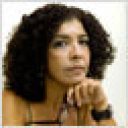 Marina Menéndez Quintero
Marina Menéndez Quintero
marina@juventudrebelde.cu
A CubaNews translation.
Edited by Walter Lippmann.
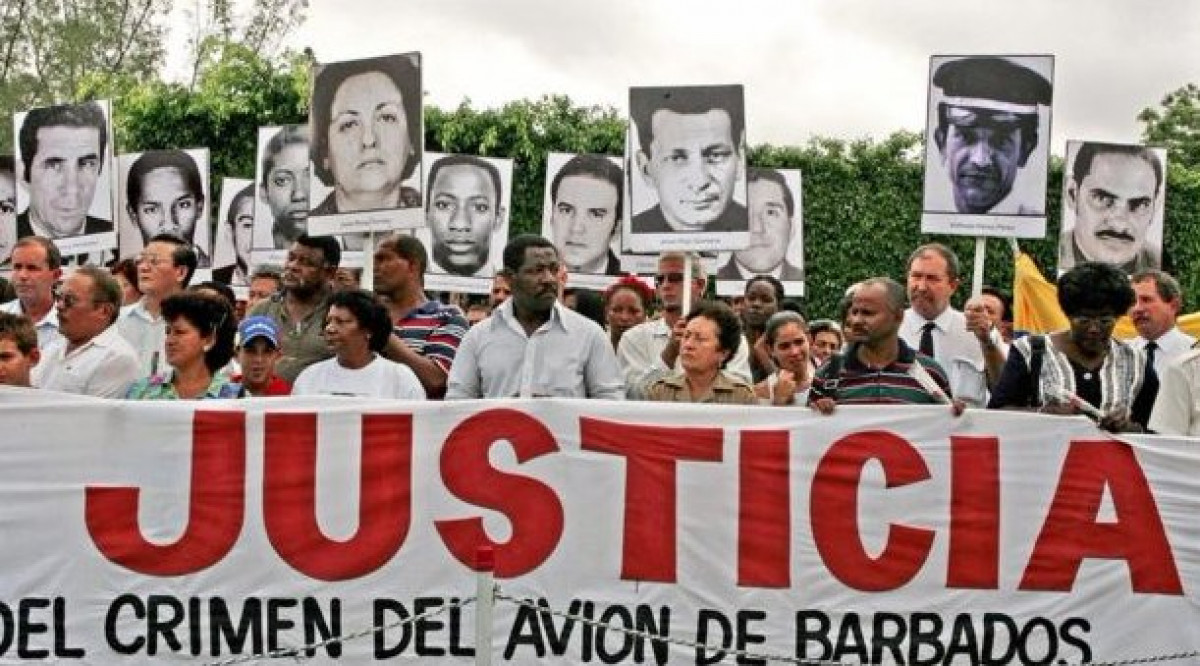
Cuba never ceased its efforts to see justice done Author: Juventud Rebelde Published: 05/23/2018 | 09:20 pm
It is not known whether the CIA, to whom he owes so much for his dirty work, will send him flowers. Nor, if there are any close relatives to mourn him.
An article in the El Nuevo Herald newspaper that reflects the news says that he died at the age of 90 at the Memorial Regional Hospital in Hollywood, in Broward, with his health deteriorating from cancer of the throat and fractures from an accident.
It is known that he had previously been in a veterans’ home (where those who do not have a caregiver are supposed to go), and that he left two children who did not have close relationships with him.
I have heard it said that a close relative living on the island was embarrassed by the blood ties that – they were the only thing – united her with him…
Luis Clemente Posada Carriles does not even deserve a single one of these, or any other line, although it should come as no surprise that the remnant of the retrograde ultra-right and violent claque that survives in Miami – among the dignified Cuban majority who want the best for their homeland – regrets his departure. No one but the human remains of the 2506 Brigade – whose men fuelled the defeated invasion at the Bay of Pigs – could announce that they would make an “honor guard” of him.
Posada did not deserve to leave as he has, without paying for his crimes against Cuba, Venezuela, Nicaragua and El Salvador, among other countries he helped to spread with his death.
Although we Cubans repudiate him for the Barbados crime and the 73 lives he took in that attack – a reason to condemn him – Posada leaves a record that will freeze the blood of anyone who, even as the years go by, wants to know his criminal record.
He tortured in Venezuela as Commissar Basilio de la terrible DISIP; he tried to assassinate Fidel in the Paraninfo of the University of Panama in November 2000, in an action frustrated by the denunciation of the Commander in Chief who had killed a thousand istmeños [people from the isthmus]; bought mercenaries of Central American origin to blow up hotels in Cuba in 1997, with explosions that killed Italian tourist Fabio Di Celmo; he participated in the scandal known as Contragate in the 1980s, during the dirty war against Sandinista Nicaragua.
He was trained by the Central Intelligence Agency at Fort Benning, and in 1967 the agency sent him as an advisor to the secret services of the dictatorships of Argentina, Chile, El Salvador and Guatemala.
The atrocities he committed were many, but perhaps what best revealed his lineage was the lack of modesty in the statement he gave to a New York Times journalist in the wake of the Havana attacks.
Then he said that, despite this, he slept “like a baby”.
None of this, not even the evidence that proved his links to the attacks on Havana hotels and was presented in the face of the judicial farce in El Paso, Texas, in 2011, was taken into account by the jury, before which he was barely taken as an illegal immigrant, after the shameful pardon granted to him by former Panamanian President Mireya Moscoso, and his illegal entry into the United States. It was the only time he ever sat in the dock.
There, where the CIA and successive administrations sheltered and protected him, he found refuge again, and today death knocked on his door.
Remembering these events would not be enough to do justice to the dead whose lives were reaped by Posada, but it once again denounces the impunity granted to him by Washington’s representatives and hawks, the protagonists of that state terrorism that was targeted as a policy against innocent nations of Latin America, with the help of abject beings such as Luis Posada Carriles. They’ll have to answer to that one day.
As for him, there’s no reason to think he’s gone away happy.
Beyond life, he can’t sleep like a baby anymore. And if he can see from there, he’ll be martyred to see that we’re still here. We are what he wanted to destroy.
The President and His Rogue Lawyer

The President and His Rogue Lawyer
Posted: Monday 21 May 2018 | 07:51:17 PM
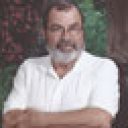
By Lázaro Fariñas
digital@juventudrebelde.cu
A CubaNews translation.
Edited by Walter Lippmann.
They say you can catch a liar faster than a man who limps, and it’s true. There are people who have the knack, also the hobby, of telling lies one after the other. They are mythomaniacs, i.e. sick people, who can’t stop lying. There are times when they do it unnecessarily. Sometimes they hide nothing and yet they lie anyway. Personally, I have known several people who have suffered from this evil and what I have really felt is pity, what is called someone else’s grief. They claim things that are simply uncertain, and even though they know that what they are saying is not true, they cannot stand it and they claim it.
Donald Trump, the president of the United States, is one of those people. He’s a rounded mythomaniac who lies all the time. Many media outlets in this country have taken it upon themselves to bring the president’s lies to the public eye. The TV comedians make fun of him, they do it every night on their shows. The man is the laughing stock of night comedians.
A few months ago, reporters accompanying him on the presidential plane asked him directly about a payment made on his behalf by his personal lawyer to a pornographic actress and he flatly denied that he knew anything about the deal. In fact, he told reporters to ask his lawyer. But now the liar has just been discovered. He himself admitted, just a few days ago, in an affidavit, that he had disbursed the $130,000. Failure to declare it last year is simply a criminal act. What will happen?
The actress known as Stormy Daniels had, years ago, an affair with the then millionaire Donald Trump, when he had no intention of running for president of the United States. According to Daniels, they had sex on that occasion, and so that it would not come to light, Trump’s lawyer reached an agreement with her and made a payment of $130,000 so that she would not talk about what had happened between her and her client. Trump didn’t want it to be known that, just three or four months after his wife gave birth to his son, he had cheated on her and with nothing less than a porn actress.
When the meeting between the two took place, it was only a personal problem, but when the agreement and payment were made, it would have become a major problem if it became known, since, only days before the 2016 presidential elections, such a scandal would have erased all chances of him winning the presidency.
Michael Cohen, was Trump’s personal attorney. But was more than just a lawyer, he was Trump’s problem solver. He’s a lawyer who only had Trump as his client and maybe one or two others.
Cohen had long been in the FBI’s sights until, about a month ago. The authorities picked him up early in the morning from his hotel room and broke into his office and private home. The FBI took with them as many phones, computers and documents as they could find at all three locations. The case is now being investigated by the New York State Attorney’s Office. But that is not the only problem Mr. Cohen faces. The lawyer who represents the pornographic actress in all these legal proceedings just a few days ago brought to light a whole series of bank transactions and videos of the former presidential lawyer who has turned the case on its head.
It turns out that Michael Cohen, for just over a year now, has been receiving millions of dollars from individuals and corporations, apparently, for selling access or ways to influence the President.
A Russian oligarch, the AT&T company, an American biopharmaceutical corporation and a Korean aeronautics corporation have been some of the clients who have paid those millions to a strange anonymous company whose only employee and owner is the former presidential lawyer.
This has not been a story or a way to try to discredit the lawyer or the president, the same people who have paid have confirmed the payments and why they did it. It’s as if there was a sign on Cohen’s office or on his website saying, “Influence is being sold with President Trump.
Of course, now, the question that falls from the cracks and that the American press wants to know is whether the lawyer took all the money or shared it with his client. The press in general, which has been keeping track of the President’s lies and claims that there is a moral vacuum in the White House. They cannot believe that Donald Trump, the client, did not know what his lawyer Michael Cohen was doing. And I don’t believe it either.
The US Will Have to Ask for Forgiveness
The United States Will Have to Ask for Forgiveness

By Manuel E. Yepe
http://manuelyepe.wordpress.com/
Exclusive for the daily POR ESTO! of Merida, Mexico.
Translated and edited by Walter Lippmann.
The U.S. House of Representatives passed a resolution in late July 2008 apologizing to African Americans for the years of slavery they have suffered. This was the recognition by the U.S. House of Representatives of the injustice and inhumanity of the slave system and “Jim Crow”, as the period of intense racial discrimination between 1865, when slavery was officially abolished and the 1960s, was known.
At that time, the US political establishment was forced to take action against nefarious racial discrimination though, in some states more and in others less, it kept black citizens legally segregated from white people and limited their civil liberties, even denying them the right to vote. This legal segregation was more inhumane and violent in the southern states than in the northern United States.
The name “Jim Crow” applied to that shameful period in American history was that of a comedian and singer named Rice, who composed and performed the song “Jump, Jim Crow” in 1828, about a black servant who danced while brushing his master’s horse. It is not clear why the term “Jim Crow” began to be used to refer to any entity that practiced racial segregation: “Jim Crow laws”, “Jim Crow schools”, “Jim Crow buses”, etc.
There were workplaces, universities, taxis, trains, buses, boats, canteens, restaurants, hotels, hospitals, health services, water fountains, prisons, nursing homes, barbershops, public parks, sports fields, circuses, fairs, theatres, cinemas, concert or party halls, libraries, beaches, swimming pools, waiting rooms, telephone booths, workshops, lifts, brothels, lines, entrances to and exits from buildings. Everything could be ascribed to this form of US form of apartheid.
Segregation applied to marriage, some professions, neighborhoods, churches and cemeteries. In some cities Jim Crow martial law was imposed and blacks could not go out on the street after a certain time of night. In the Jim Crow courts, whites swore with one hand on a Bible and blacks swore on a different copy of it.
Black people were excluded from most trade unions. They were not admitted to Jim Crow sororities, clubs and societies. Board games and sports involving physical contact between blacks and whites, including combat games such as boxing, were prohibited unless the opponent was a foreigner.
Add to this ignominious situation the violence with which the Ku Klux Klan, members of the John Birch Society, the White Citizens’ Council and other elements of the American extreme-right were acting. It was a real white terrorist system!
In the face of such outrage, the struggle of Black Americans for their civil rights became increasingly intense. It generated such great personalities as Malcolm X and the Reverend Martin Luther King Jr., as well as hundreds of martyrs, remembered or anonymous, from Black Power organizations and others who, in the 1960s, gave birth to a situation that seemed to be a precursor to a revolution.
Although the fear of reprisals by the empire and its control of the media limited the international denunciation of these abuses and global solidarity, the triumph of the revolution in Cuba, the rise of anti-imperialism and the ideas of social justice in Latin America encouraged the just domestic struggle of Black people.
This coincided with the need for the recruitment of black soldiers for the asymmetrical imperialist war against Vietnam and all this forced the establishment to bury the Jim Crow.
For the sake of national security, the empire made major reformist “concessions” in race relations in a country where the law was white, white policemen, white judges, white mayors. And on film and TV screens, actors and actresses were white, and blacks were always represented in submissive and complacent attitudes.
Prior to this request for an apology from the House of Representatives, the other branch of Congress, the Senate, passed another resolution in April 2008 apologizing for “the many cases of violence, abuse and neglect” suffered by Native Americans. The Senate also apologized in 1993 for the “illegal overthrow” of the Kingdom of Hawaii a hundred years earlier.
Yet humanity is still waiting for the U.S. to apologize and compensate so many nations on every continent whose democratic existence the U.S. has assaulted since it became an imperialist power in the early 20th century. And to do so with the promise to never again to intervene in the internal affairs of other nations, as well as to respect the human rights of their own citizens of other ethnicities and ways of thinking.
May 17, 2018.
How to Regain Trust?
From Psychology: How to Regain Trust?
Posted on May 15, 2018 – 8:11 by Yoel Almaguer de Armas
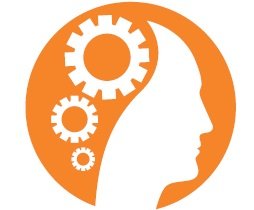 From the province of Camagüey, a father wrote to us saying that, after fifteen years of marriage with his wife, they decided to end their relationship. He says he got a job in Havana and that forced him to leave his only son behind. Several years have passed, and this father feels that he has lost the trust of his child He asks us how to recover it.
From the province of Camagüey, a father wrote to us saying that, after fifteen years of marriage with his wife, they decided to end their relationship. He says he got a job in Havana and that forced him to leave his only son behind. Several years have passed, and this father feels that he has lost the trust of his child He asks us how to recover it.
Answering his question, Rolando Javier Rodríguez Camejo, Specialist at the Counseling and Psychological Assistance Center of the Psychology Department of the University of Havana, explains that if the physical remoteness became psychological distance it is very likely that the child has filled the empty spaces with frustrations, resentments and other negative elements.
The psychologist advises not to try to recover trust through imposition, but using mechanisms that would facilitate the bond with the child. “The affective approach and closeness of the father with the son is important and this requires a systematic link”.
The specialist indicates that the mother’s support is important for this process. “Sometimes the mother’s family has a negative impact on the return of the father, and this situation causes the child to be in the middle of a conflict which generates emotional and psychological instability.”
Rodriguez Camejo concludes saying that in order to regain trust “the first thing that this dad should do is to achieve communication with his son, and later regain the authority which is earned over time.”
You can mail your questions to: yoel.almaguer@trabajadores.cu or through our website: http://www.trabajadores.cu/salud/
Subscribe to Blog via Email
| M | T | W | T | F | S | S |
|---|---|---|---|---|---|---|
| 1 | 2 | 3 | 4 | 5 | 6 | 7 |
| 8 | 9 | 10 | 11 | 12 | 13 | 14 |
| 15 | 16 | 17 | 18 | 19 | 20 | 21 |
| 22 | 23 | 24 | 25 | 26 | 27 | 28 |
| 29 | 30 | 31 | ||||

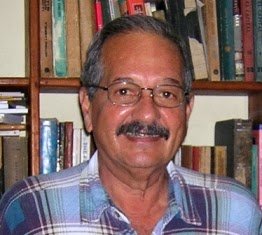
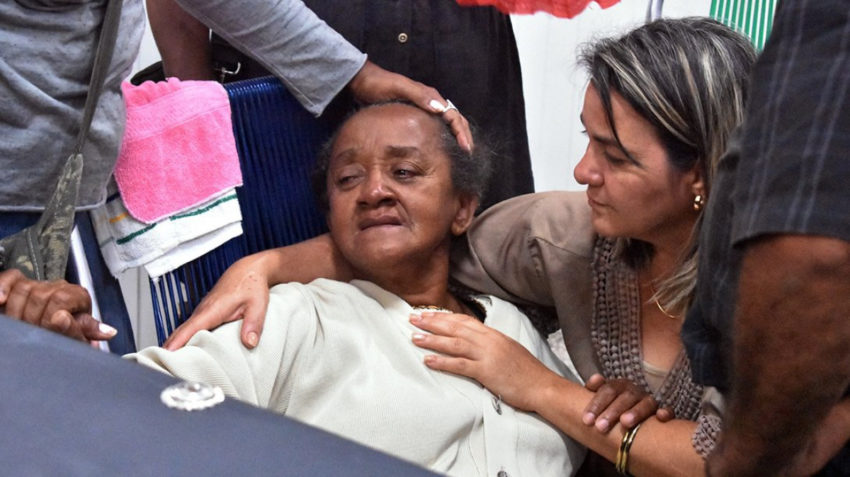

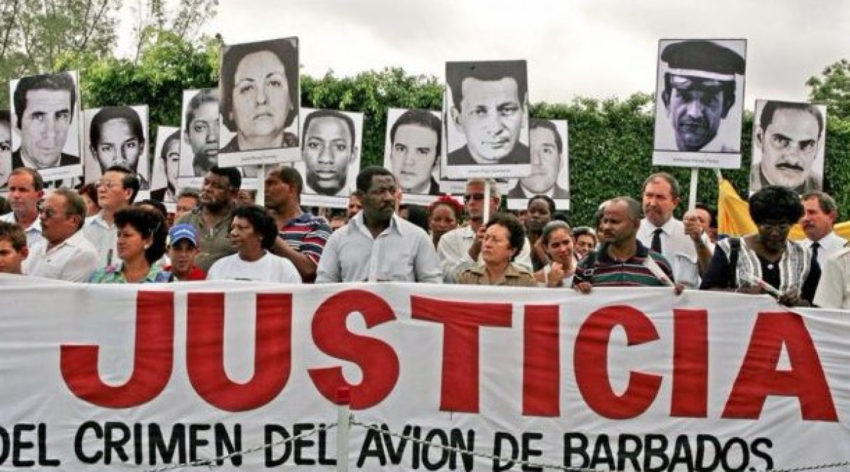
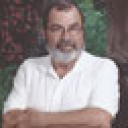

You must be logged in to post a comment.